|
Atterbury-Bakalar Air Museum
Ernie Pyle WWII Museum
Five Points Fire Museum
Fort Wayne
Firefighters Museum Freeman
Army Airfield Museum
Virgil "Gus"
Grissom Memorial
Hoosier Air Museum
Indiana Military
Museum
Indianapolis Fire Museum McClain
Military Museum
Military Honor
Park and Museum
Museum of the Soldier
National
Military History Center/Automotive and Carriage Museum National
Model Aviation Museum
Rolls-Royce Heritage Center, Allison Branch
Ropkey Armor Museum
Stutz Car Museum
Wayne County
Historical Museum
Indiana Museums
- Aviation, Military, Automotive and Fire
Indiana
Military Museum
Vincennes, IN
Dates visited: 2-26-2014,
8-30-2014, 1-22-2019
Last updated 1-26-2019. (Scroll to the end for the 8-30-2014 update.)
Updated 1-22-2018 Visit
Information and Photos:
On 1-15-2019 the Indiana
Military Museum opened its new annex which has at least five times the
square footage than the main museum building. Many vehicles and
other artifacts that could not previously be displayed are now open to
the public. As of this date there are now only two military
museums left of note in Indiana, as opposed to the four that were in
existence in 2014 when I first visited here. This museum, and the
LST-325 ship in Evansville are all that remain. With the addition
of the annex the Indiana Military Museum in Vincennes is now the museum
with the best collection of military vehicles, both land and air, not
only in Indiana, but within the Midwest. Below are a few examples
of artifacts on display in the new annex.

After seven years of work by museum
volunteers, the LCVP is now restored and on display. There are
eight original LCVPs in the United States. This is one of three in
the country that are available to visit in
museums as of January 2019. Author's photo added 1-26-2019.
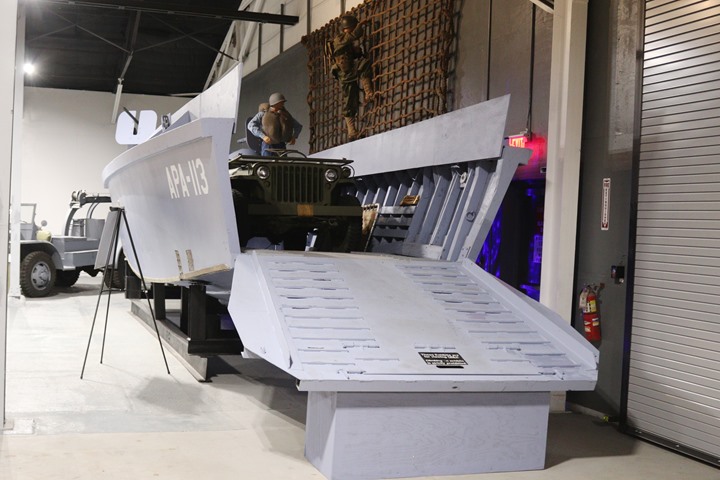
The LCVP is part of a diorama with a
net against the wall simulating the side of a ship, and a soldier
climbing down to take his place in the boat. This is the only LCVP
restoration I have seen that has .30 caliber machine guns and armor
plant located at the gun tubs. This is a job very well done by the
Indiana Military Museum. Author's photo added 1-26-2019.
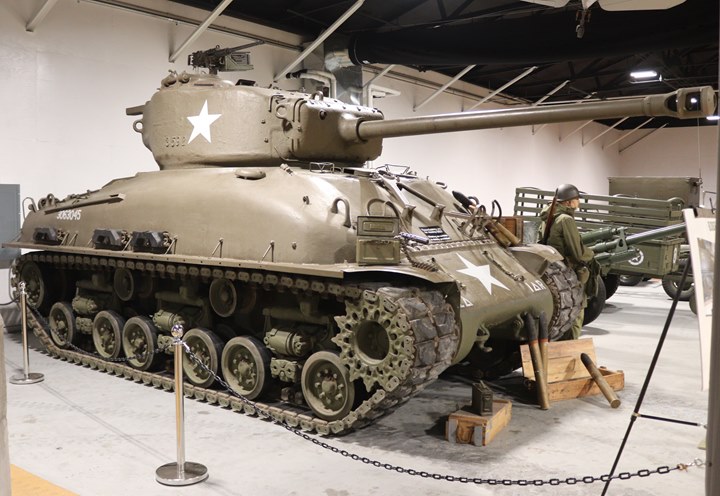
The Museum's M4A1 Sherman tank is now on
display after being in storage for several years. Author's photo
added 1-26-2019.
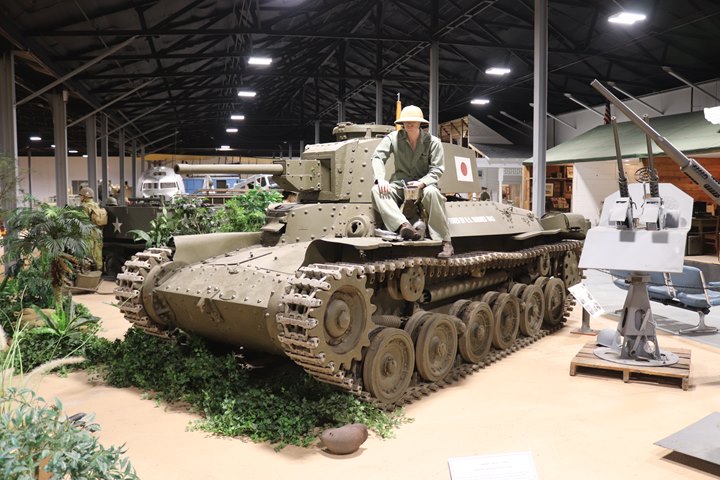
This very rare Mitsubishi Type-95 is one of
only 2,103 built. It was captured by U.S. Marines in 1943, and is
on loan from the USMC. This photo also shows the size of the
new annex display. Author's photo added 1-26-2019.
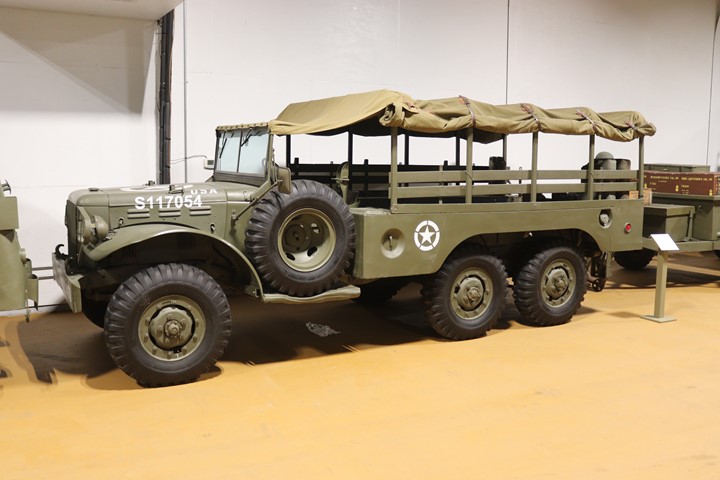
The Museum's Dodge WC-62 1-1/2-ton truck is
now on display. Dodge built 23,092 of these between 1943 and 1945.
Author's photo added 1-26-2019.
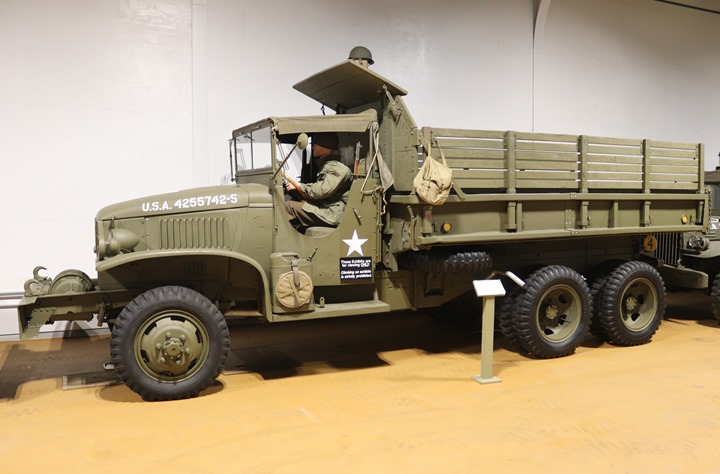
This Airborne CCKW-353 Cargo-Dump
was one of 1,210 built by GMC at its Pontiac, MI plant. The truck
was separated into four pieces which were air transportable by C-47 to
the battlefield where they could then be assembled by the maintenance
crews.
Author's photo added 1-26-2019.
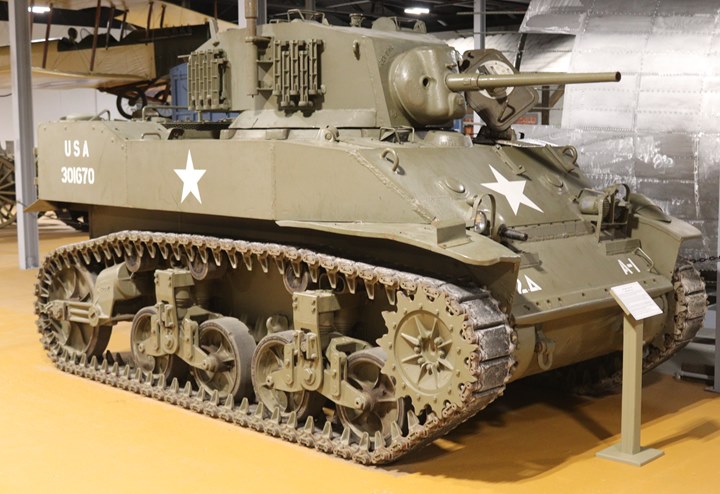
This is one of 6,810 M5A1 light tanks built
by the Cadillac and Southern California Divisions of General Motors,
Mass-Harris, and American Car and Foundry. Author's photo added
1-26-2019.

I finish this section with another photo of
the restored LVCP. 23,358 were built during World
War Two. Only 12 are known to exist, of which only eight are in the
United States. To me, this is the most valuable and historic
artifact the Indiana Military Museum has. It is worth the trip to
Vincennes, IN just to see this historic landing craft. Author's
photo added 1-26-2019.
At the end of this page
one can see what the LCVP looked like before restoration. Great
work by the volunteers at the Indiana Military Museum.
Original 2-26-2014 Visit
Information:
The Indiana Military Museum
is one of four military museums in the state of Indiana, and is now
located as of 2013 in a new and larger location near the George Rogers
Clark Memorial on the south side of Vincennes. Since the last time
I visited it in 2008, the museum has added more vehicles, artillery
pieces, and aircraft. Aircraft on display now include A-26, F-4,
C-45, C-47, T-33, TM-76B and UH-1. Several of the vehicles that the
museum owns are in working condition and are used one weekend in
September as part of its re-enactor open house. Several items are
in restoration, including one of only twelve original World War Two LCVP landing
craft still in existence.
As noted above, the George
Rogers Clark Memorial is four blocks away. The Fort Knox II Historic
Site is three miles to the north right along the Wabash River. The
Sugarloaf Indiana Mound is about one mile to the northeast. While
Vincennes may be off the beaten path, there are
plenty of places to visit besides the museum once one arrives.
Below is a sampling of the many items at the Indiana Military Museum,
along with photos of the Rogers Clark Memorial and Fort Knox II.
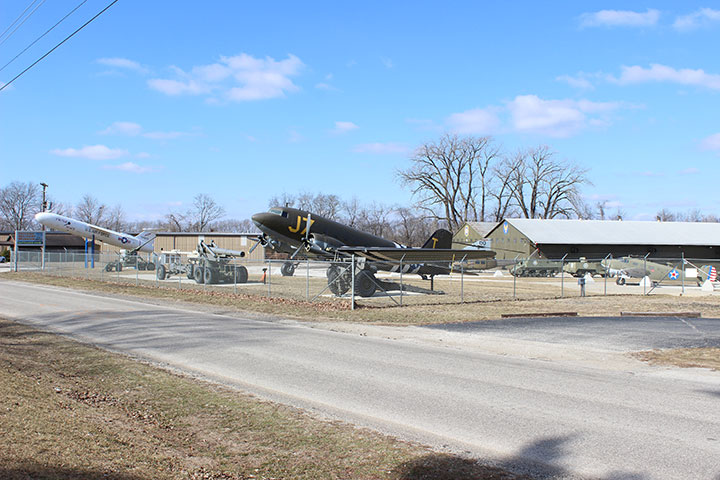
This photo was taken from across the street,
at the intersection of 6th Street/Business US 41 and Willow Streets.
As one is driving south on 6th Street, the C-47 can be seen from about
two blocks away. Sharing the space along the front fence are
several artillery pieces and the TM-76B Mace, which was formerly on
display at a VFW in Florida.
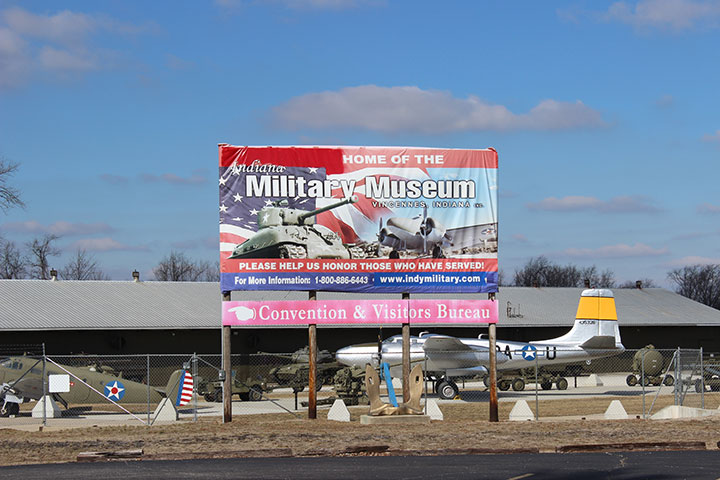
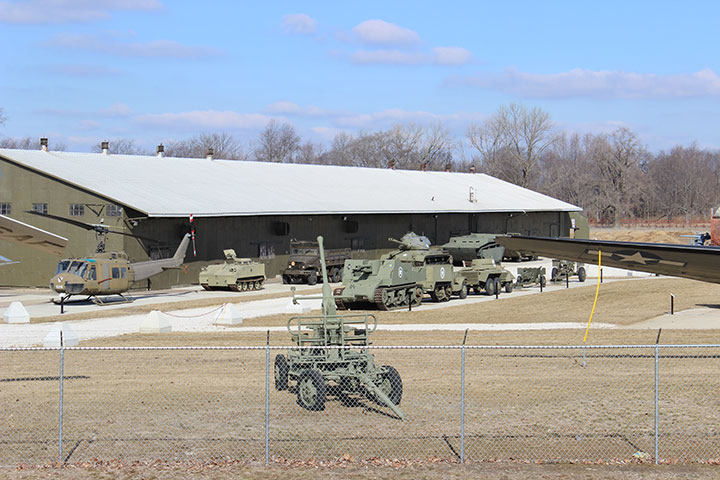
Another photo from across the street shows
the Sexton Mark III, UH-1, M114, M211, M3, M8 and one of two 40mm Bofors anti-aircraft guns on display. The building behind the
displays is used for restoration and storage of operating vehicles.
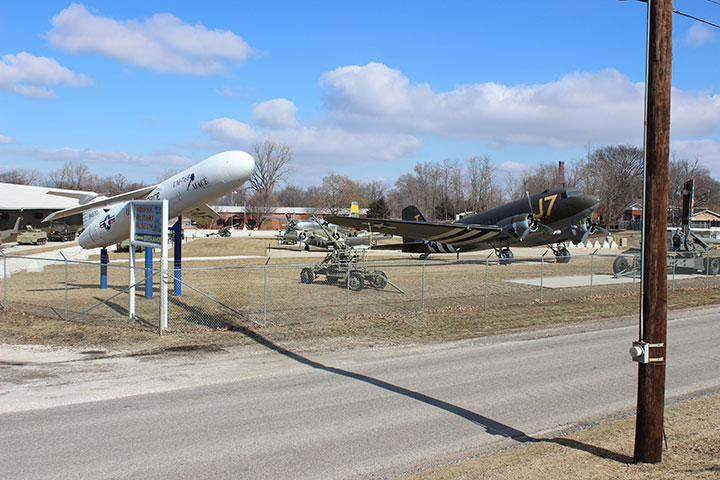
This photo shows the Mace, 40mm Bofors and
C-47 along the front fence.
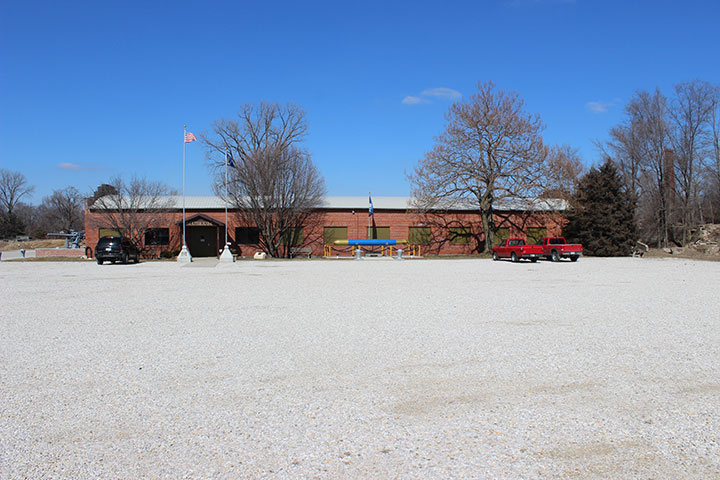
A view of the museum building, which at one
time was a glass factory.
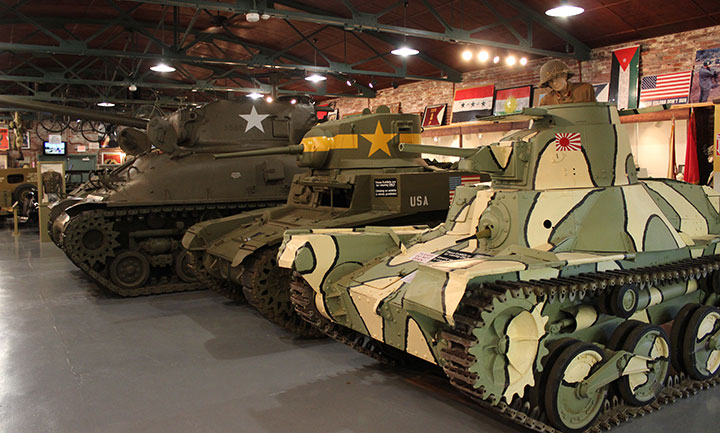
There is more armor inside the museum.
Note the size differences between the Japanese tank and M3 compared to
the 76mm M4A1 HVSS Sherman.
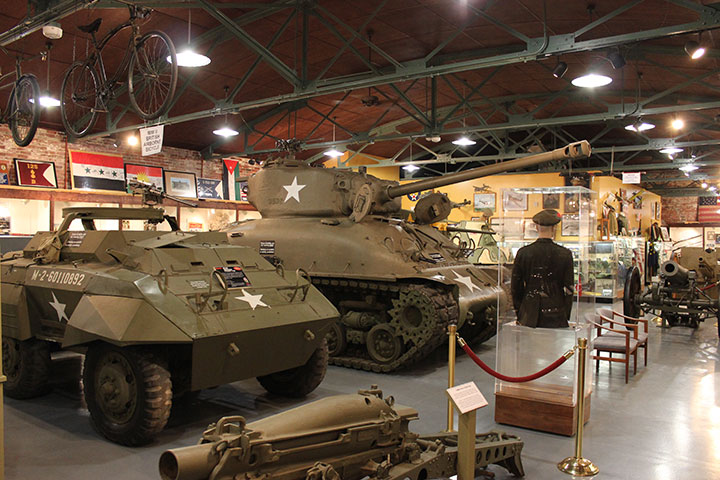
Looking in the opposite direction, one can
compare the M20 command car to the M4A1, which is running condition with
a Ford GAF V-8 rather than the original Continental R-975 engine.
It is taken out of the building and operated in September for the annual
WWII re-enactor open house.
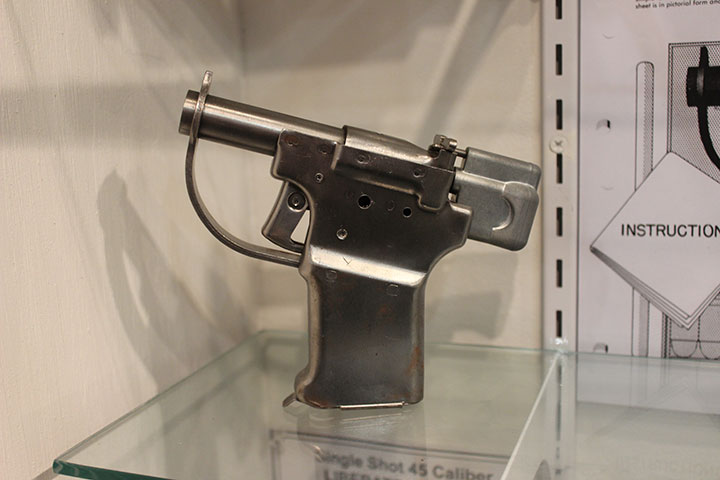
One of the most interesting displays is this
FP-45 Liberator Pistol . One million of these were secretly built
in three months by 300 women in the former Guide Lamp plant in
Anderson, IN, which is just 8 miles from my house. This is the best
one I have ever found at a museum.
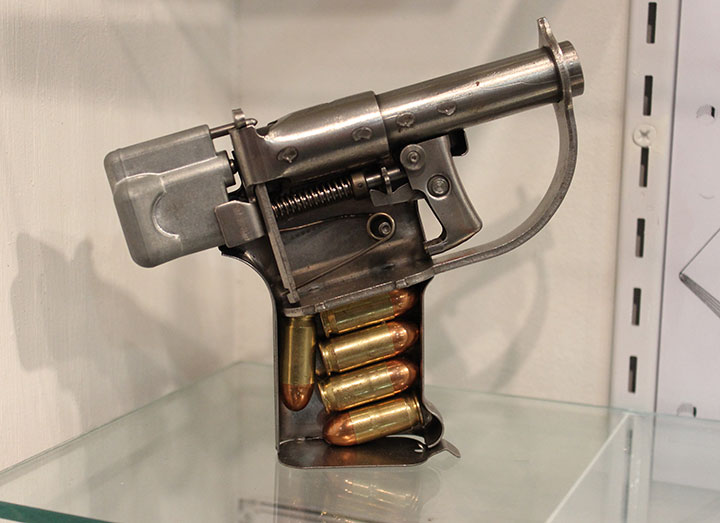
What really makes the display interesting is
that the Assistant Curator opened the case and turned the weapon around
for me, revealing this cutaway of the internal workings. I have
never seen that, and was worth the trip to the museum in itself. The
FP-45 was intended to be dropped to resistance fighters in Europe during
WWII, but this never happened. This is probably due to the fact
the weapon falls into the "it sounded like a good idea at the time"
category. In looking at the small mass to absorb the recoil of the
large .45 caliber cartridge, that the shooter could have been more endangered than the target. Along with the short barrel
and the fact firing a .45 ACP handgun accurately in repeatable manner is an acquired skill, it
is doubtful the user would have hit the target. This is probably
why they were never used and were scrapped.
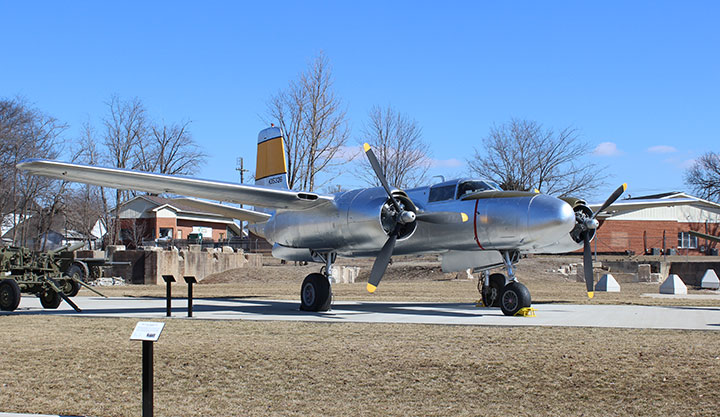
This Douglas A-26 Invader is a recent
addition to the museum, having sat at the Rockford, IL airport for
twenty years before being purchased by the Indiana Military Museum.
An eight gun nose and top turret for the
aircraft are currently being constructed.

This photo shows the 90mm anti-aircraft gun
on display that is located by the A-26.
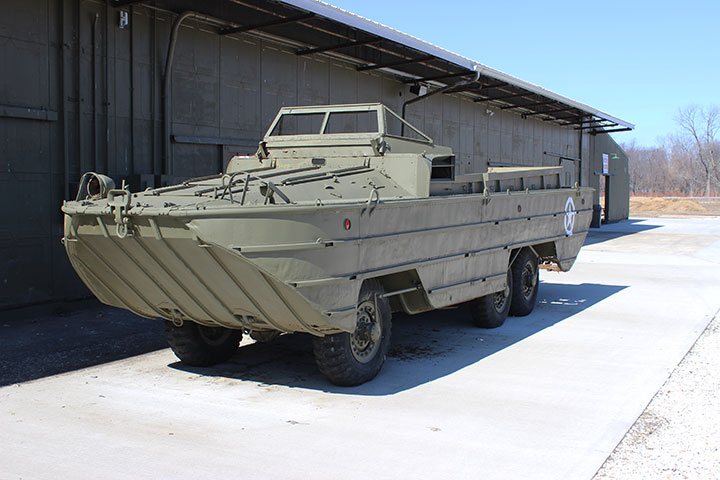
A GMC/Chevrolet DUKW. While GMC gets
credit for the building of the DUKW in Pontiac, MI, many of them were
also built by Chevrolet in St. Louis, MO during WWII. Chevrolet
also built engines for the DUKW in its Flint, MI Plant 2. The building
next to the DUKW is the restoration area and storage for the operating
M3 half-track and two Bren Gun / Universal Carriers owned by the museum.
This building is also part of the former glass factory and is where the LCVP
is being restored. The building and restoration area are open
to the public during the September open house.
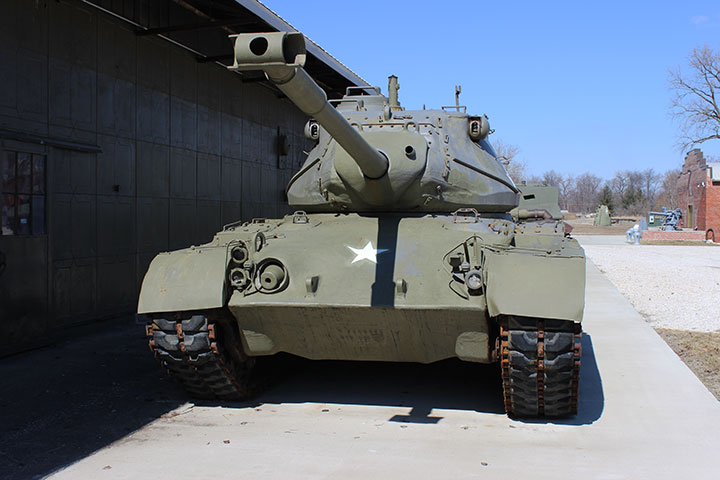
An M47 Patton tank on display.
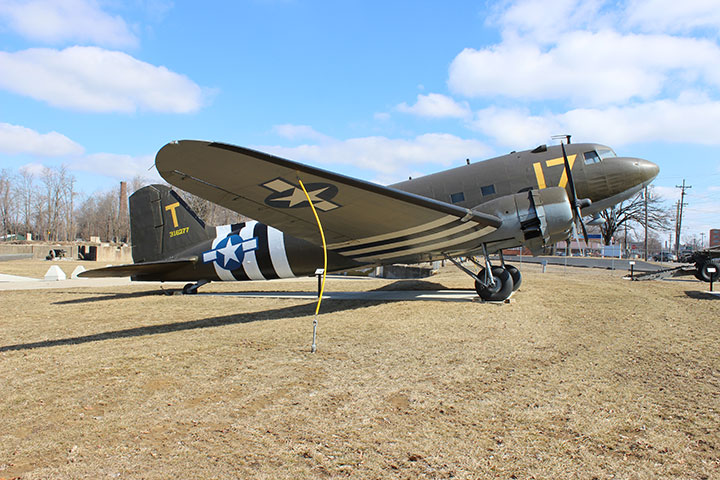
How much is a C-47 worth? In this case,
it was two good rotor blades off the Museum's UH-1 Huey. An
organization in Indianapolis that operates Hueys traded this C-47 along
with two old rotor blades for the good ones. The C-47 arrived in
pieces on three semi-trailers in civilian paint, . There is a video
inside the museum showing not only the volunteers assembling this C-47,
but also the A-26, as it came in disassembled.
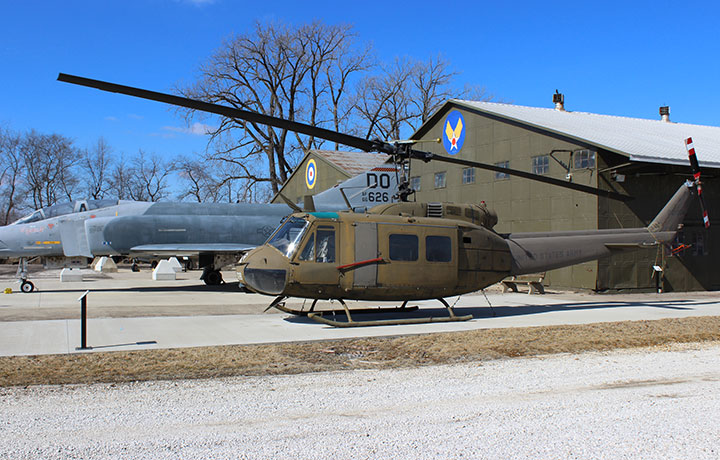
The UH-1 Huey that made a donation of rotor
blades to acquire the C-47.
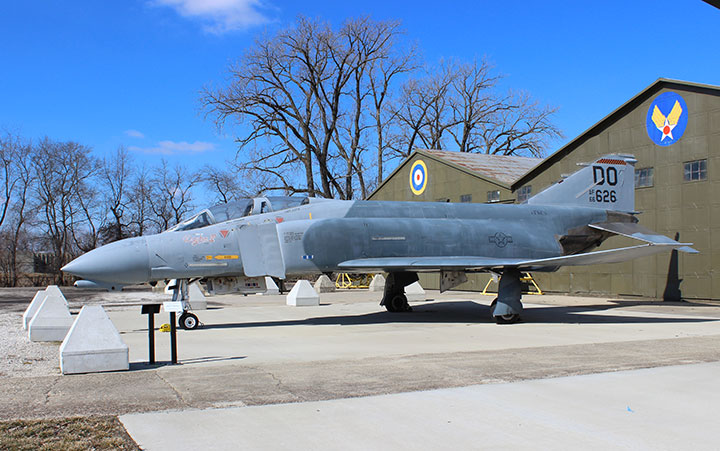
The F-4 was previously on display at
Wright-Patterson AFB in Ohio.
The George Rogers Clark Memorial
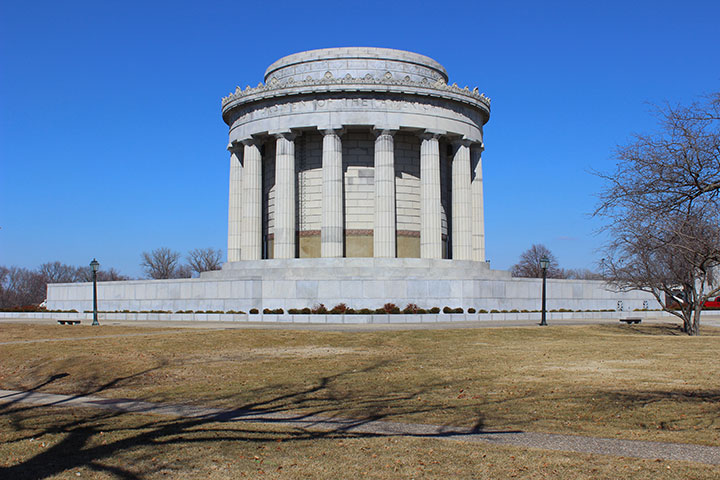
Just around the corner from the Indiana
Military Museum is the George Rogers Clark Memorial and Visitor Center.
Fort Sackville, which George Roger Clark captured from the British during
the Revolutionary War on February 25, 1779, was located where the
memorial now stands. Also, Fort Knox III was later located in the
same place.
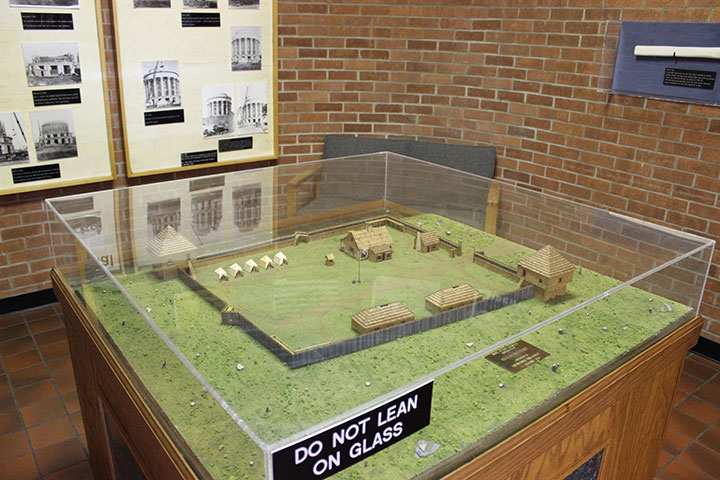
A model of Fort Sackville inside the Visitor
Center.
Fort Knox II
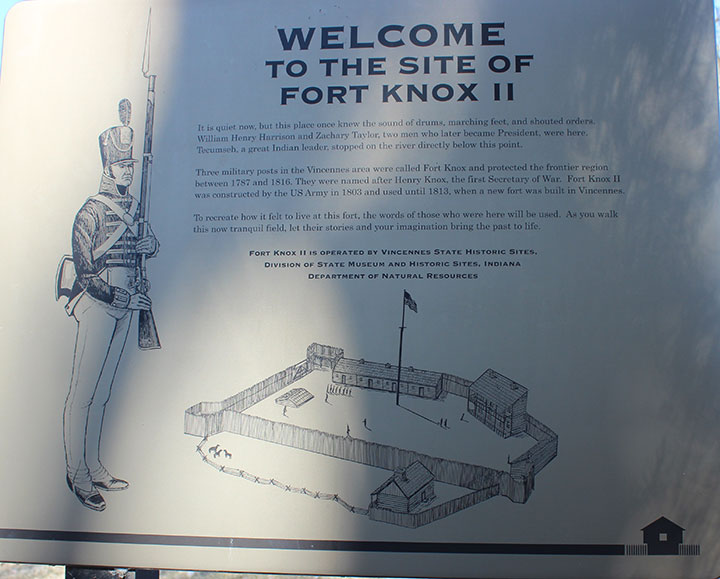
The original Fort Knox was located just a
few hundred yards north of the Memorial and the location of Fort
Sackville in Vincennes.
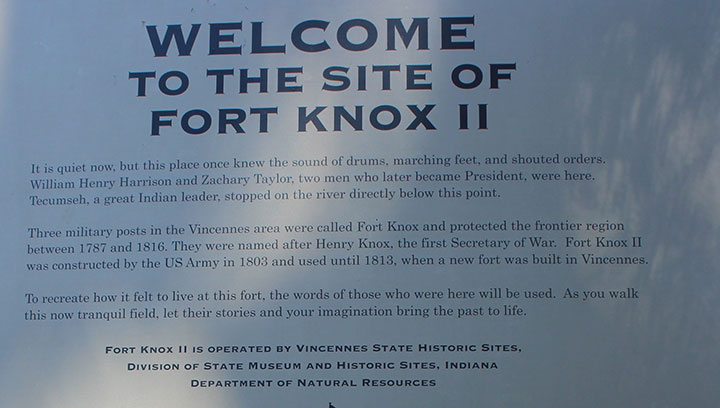
In 1803 the fort was moved to this location,
three miles north of town and named Fort Knox II. In 1813 the fort
was disassembled, and the logs floated down the Wabash River where they
were used to build Fort Knox III, at the location of the former Fort
Sackville.
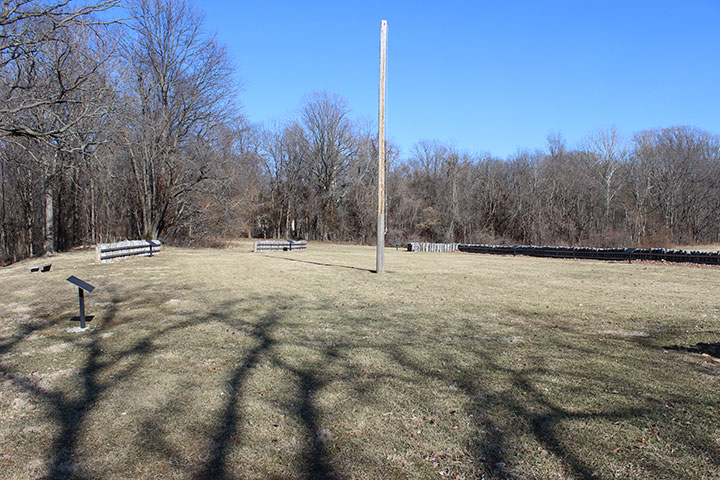
Today the outline of the fort is shown by
logs positioned around the perimeter.
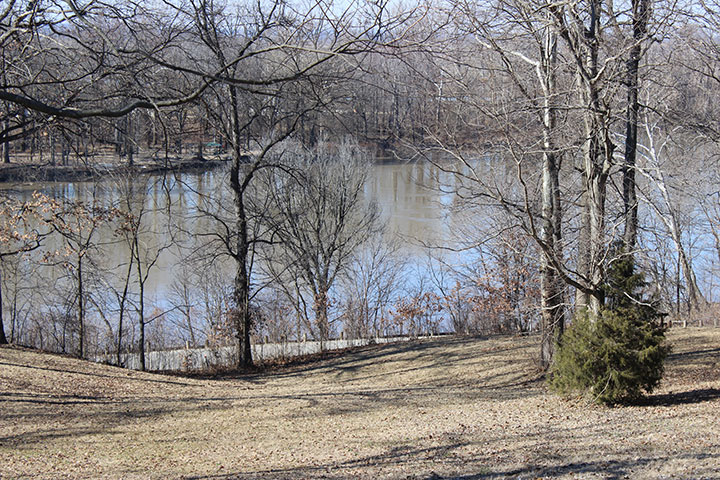
Looking down from the location of Fort Knox
II one can see the Wabash River. From here one can see where
Tecumseh stopped on August 14, 1810 on his way to meet William Henry
Harrison down river in Vincennes.
Date re-visited: 8-30-2014
for the Salute to WWII Veterans
I revisited the museum for a
second time on August 30, 2014 for the Salute to WWII Veterans on Labor
Day Weekend. One of my main reasons for the trip was to be able to
see one of twelve original LCVP's still in existence.
The Indiana Military Museum purchased the LCVP in 2012, which was
located in Port St. Lucie, Florida, where it had been used by oil
companies in the Gulf of Mexico. The LCVP is located in the
restoration area which is only open to the public during its Labor Day
weekend event.
23,358 of the wooden LCVPs, or Higgins Boats,
were built not only by Higgins, but also by six other shipyards throughout the country.
One such company was
Chris-Craft in Michigan, which built over 12,000 landing craft of all types.
Most of the persons visiting the restoration
building in which the LCVP is located, walked right by it, not understanding
its significance and how it may have been the most important weapon the
US had during WWII. But one person, who was responsible for all of
the Allied Landings in Europe during WWII, did understand how important
it was to the winning of the war.
“Andrew Higgins is
the man who won the war for us. If Higgins had not designed and
built those LCVPs (Landing Craft, Vehicle and Personnel), we never could
have landed over an open beach. The whole strategy of the war would have
been different.”
-President Dwight D.
Eisenhower, 1964 interview
For me, it was a
chance to look at something other than a replica or a finished, pristine
restoration. It allowed me to examine how the LCVP / Higgins Boat
was put together.
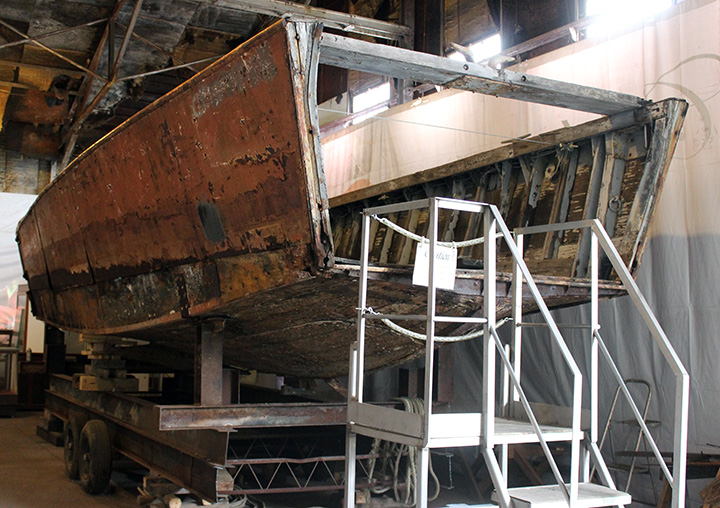
This is the real deal. Many LCVPs on
display are replicas, many of them made of fiberglass. Obviously,
this example is not pristine, as it is in un-restored condition after
being used as a working boat in Florida for many years. This
allows one to more closely examine the original construction. The
piece of 4"x10" rough cut lumber across the throat of the boat
is not original, as that was a completely open space behind the ramp.
It is there now to keep the boat from twisting as the armor plate is
being removed. There is also a cable just behind it that is also
helping with this issue. The steel ramp has been moved to another
area for restoration. Note the steel armor plate on the starboard
side that goes down to the water line.
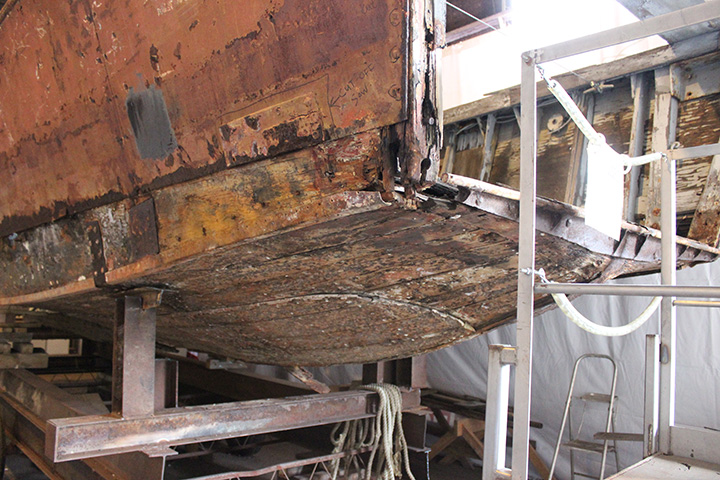
Note that there is an added reinforcement on
the bottom to protect the hull when it would land on the beach.
One can also see the bottom of the steel armor plate. All the
barnacles that were on the boat have been removed.
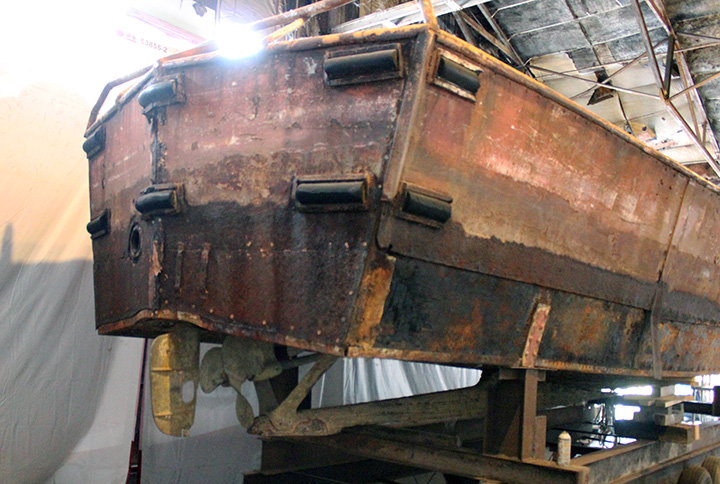
This photo shows the propeller, rudder, and
the wooden guard that protects them both. Also, it can be noted,
besides the side armor plate extending to the water line, steel plate
covers the entire back of the boat.
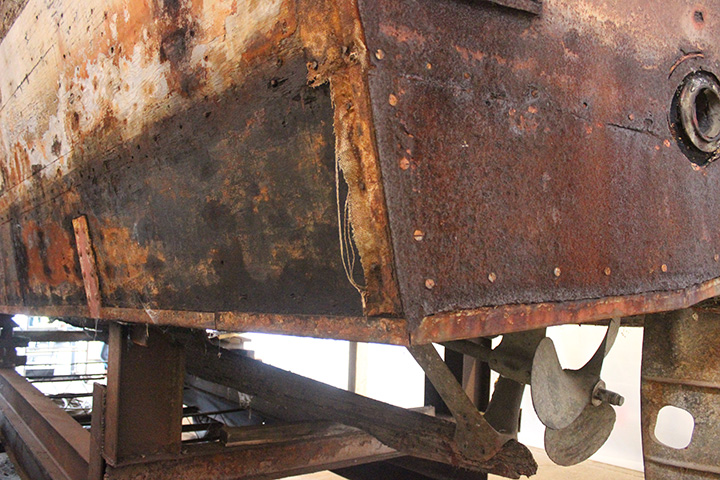
From this photo there was a layer of heavy
cotton or duck material that is between the marine plywood and steel.
The screws are blade type wood screws which do not lend themselves to
being installed with an air tool. These apparently were all driven
by hand.
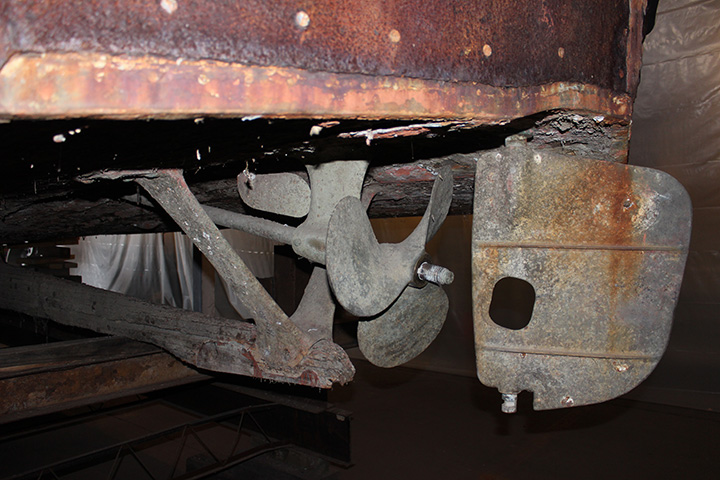
Here is a close-up of the rudder, propeller
and the guard.
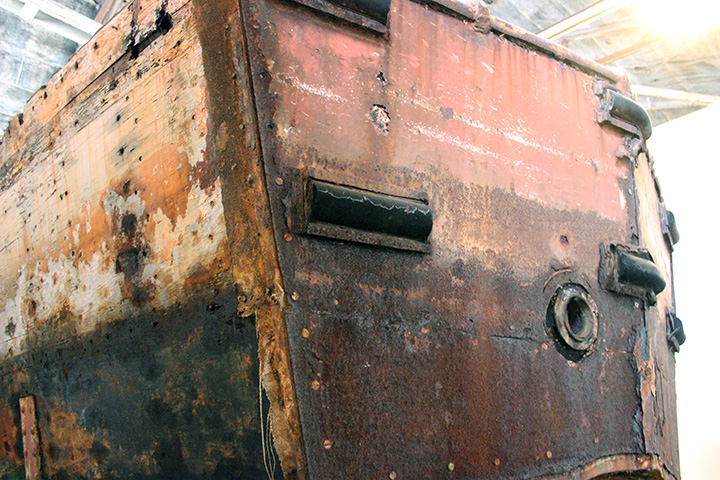
Another view of the rear armor plate, which
is 6 gauge or 0.2 inch (6mm) Special Treatment Steel (STS), used on US
Navy ships for armor protection. In the center of the stern is the exhaust
port.
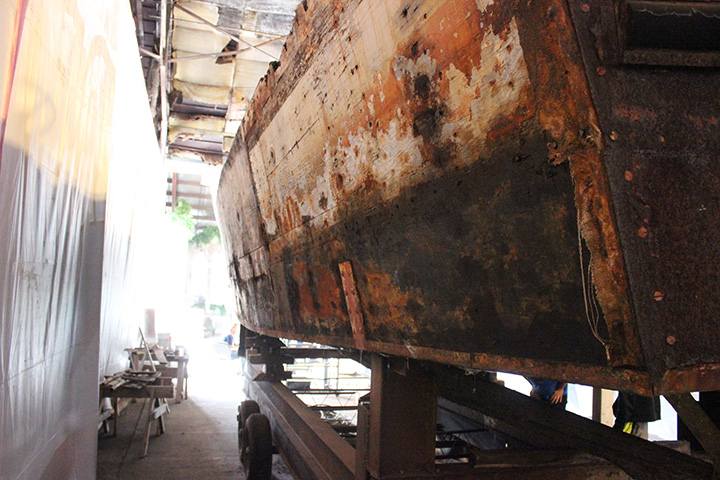
This photo looks down the port side of the
boat from the rear. One can see the armor plate has been removed from
the back half as part of the restoration process. As of mid-November 2014, all of the armor plate had been removed from this side of
the boat.
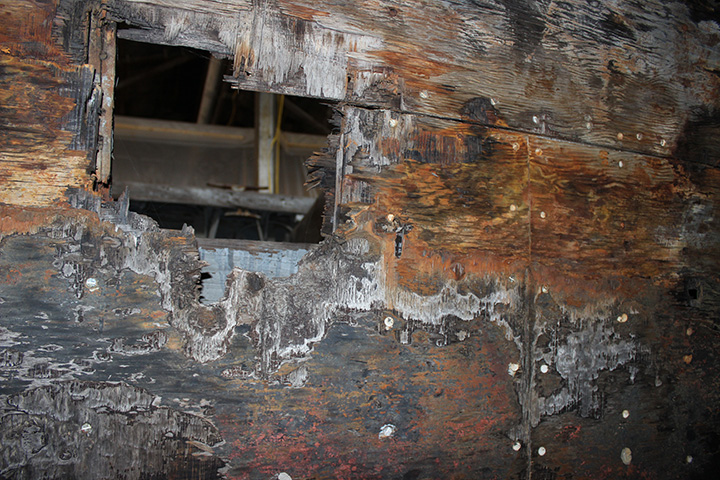
Around the hole in the plywood one can see
the delamination of the marine plywood used in its construction. Nails have mounted the plywood to the frame.
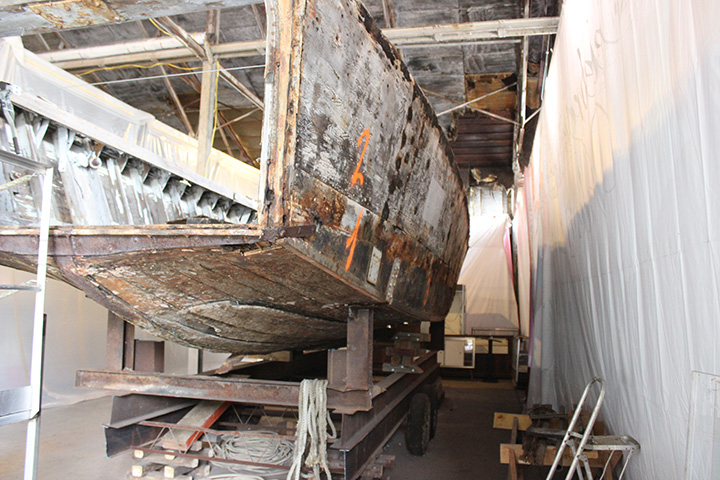
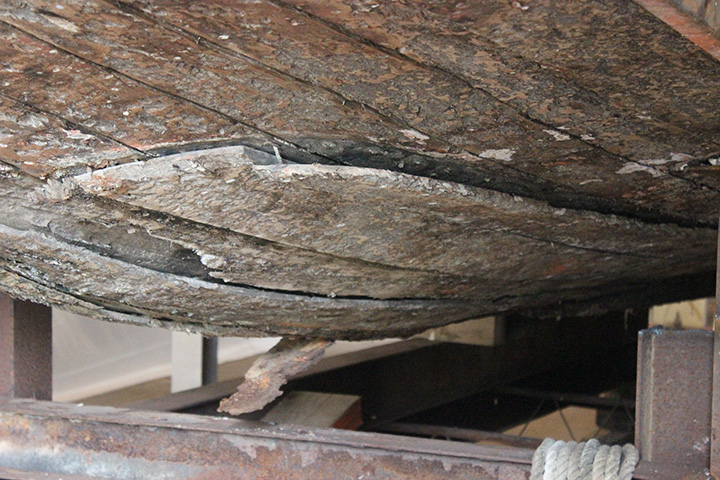
Here is a better view of the bottom plate
which is separating from the main hull. What looks to be a rusted,
thin piece of steel is hanging down from the plate, indicating there was
steel on the bottom.
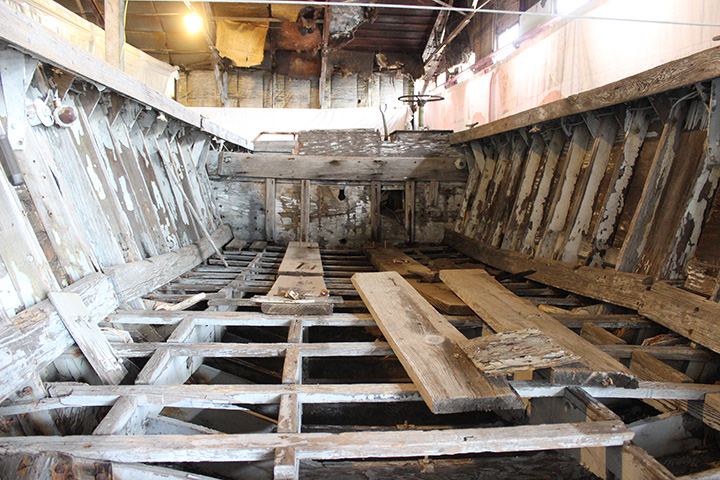
This photo shows the floor joists and engine
location in the center behind the bulkhead and the coxswain's station.
The LCVP arrived from Florida without the floorboards.
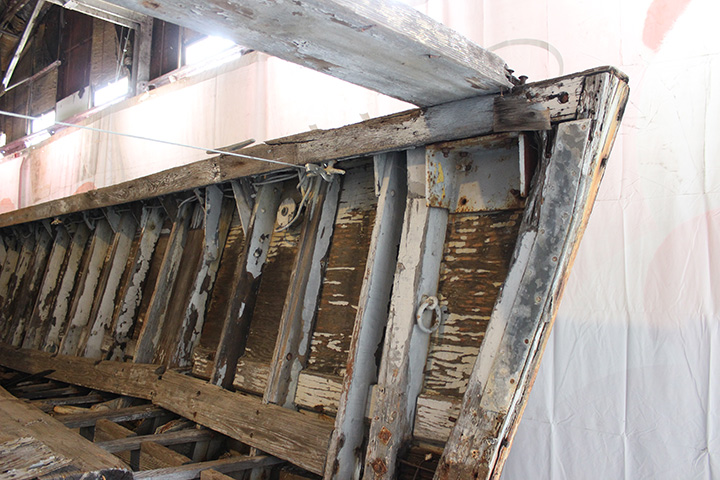
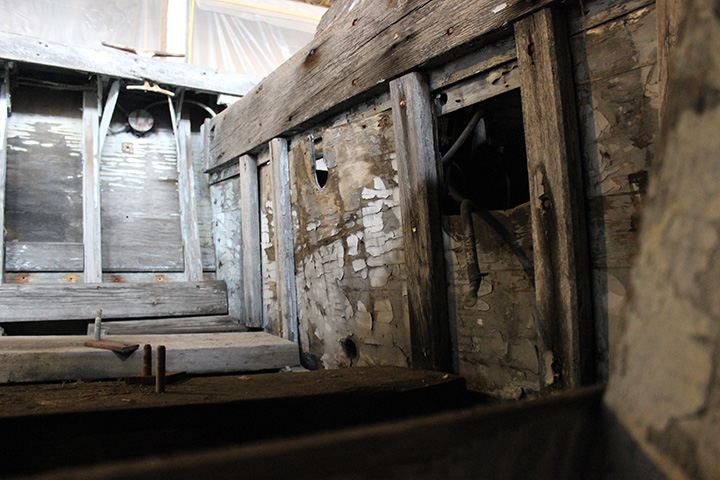
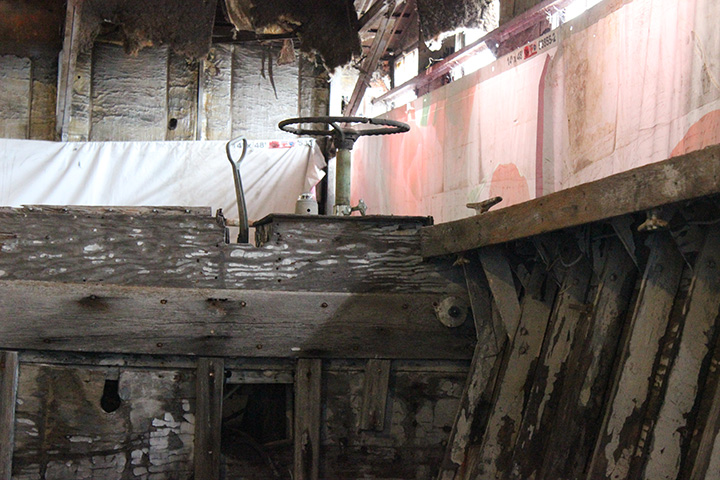
Besides the coxswain that commanded and
steered the boat from this position, there was also a mechanic, bowman
and sternman. The LCVP's were crewed by members of the US Coast
Guard.
Restoration is proceeding on the LCVP at
the museum. It should be put on display in a couple of years.
|










































